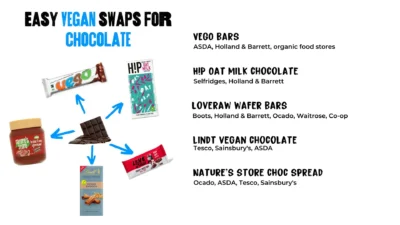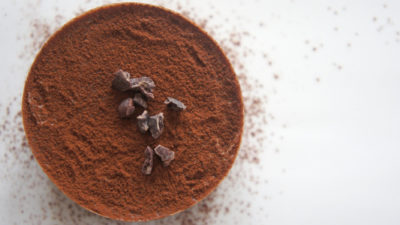Chocolate, cocoa, cacao and our emotions

Why does the dark stuff make us feel good? It turns out there’s a very powerful cocktail of natural compounds that all work together to produce pleasurable feelings and more!
First of all, let’s sort out what’s what – cacao, cocoa and chocolate. Cacao (Theobroma cacao) is the name of the plant, or tree to be precise, from which we get all the good stuff. Cacao trees bear fruit in the form of large pods with beans inside. When harvested, the beans are fermented, dried, roasted (unless it’s for raw cocoa products) and processed into cocoa liquor, cocoa mass, cocoa powder and cocoa butter.
Cacao (as opposed to cocoa) powder or nibs are made from fermented and dried, but unroasted or only lightly roasted, beans to preserve more nutrients. Chocolate is the food or drink made up from some or all these different forms of cocoa, usually with added sugar and ingredients such as liquids, fats, vanilla and other flavourings.
As a rule of thumb, the fewer ingredients the product contains, the more of the good stuff you’re getting. When it comes to chocolate, the higher the cocoa content the better.
Pleasure food
Cacao contains a wealth of potent phytochemicals and probably the strongest of them is phenethylamine (PEA) – a compound that stimulates the nervous system and triggers a release of endorphins, the ‘happy’ hormones. But that’s not all it does! PEA can also stimulate the release of dopamine, a hormone linked to sexual arousal and pleasure. No wonder chocolate is considered a romantic gift!
Chocolate stimulant
What you probably knew already is that cacao is a source of caffeine – an antioxidant and powerful stimulant. Caffeine energises the central nervous system, stimulates blood flow in the brain and increases the production of serotonin – a neurochemical that makes you feel and sleep better. Half of a regular 100-gram bar of dark chocolate provides between 10 and 60 milligrams of caffeine, whilst a cup of coffee contains 65-200 milligrams. If you’re sensitive to caffeine, don’t eat chocolate before bed!
Theobromine is another of cacao’s phytochemicals and is related to caffeine, also acting as a stimulant but weaker. Theobromine has some unique properties – it helps the tiny muscles in the lungs relax – helpful if you’re struggling with a cough – and it helps to lower blood pressure.
Bliss molecule
Cacao beans – and chocolate by default – contain another amazing compound. It’s called anandamide and produces blissful feelings! The name comes from the Sanskrit word for bliss – Ananda.
Anandamide is a cannabinoid – yes, from the same family of substances as the stuff that produces a marijuana ‘high’ – but less strong and in any case, your body naturally produces it all the time. Some people have more, others less because anandamide is broken down by an enzyme in your body and some lucky people have less of it so they have higher anandamide levels, which makes them effortlessly happier. Chocolate not only gives you an extra dose of anandamide it also contains compounds that slow anandamide’s breakdown. It’s also thought that chocolate may cause the brain to produce more anandamide.
Happy happy joy joy
Cacao is a rich source of L-tryptophan, a substance which your body turns into serotonin, the feel-good neurochemical. Serotonin plays a major role in positive mood, healthy sleep and appetite. Low serotonin levels can cause disturbances of all these and even lead to depression. Women have more serotonin receptors in the brain than men, which is why they seem to be more receptive to chocolate. It can even help to alleviate the natural decrease in feel-good hormones which women experience before and during their period.
Stress buster
Cacao doesn’t just produce positive emotions, it also helps to reduce levels of the stress hormone cortisol. In one study, people who suffered from anxiety ate 40 grams of dark chocolate daily for two weeks and their cortisol levels dropped, along with much of their anxiety.
Another study found out that 50 grams of dark chocolate daily, along with five serving of fruit and vegetables, reduced depressive symptoms in participants and improved their general mental health status.
Powerful biochemistry
Cacao packs some strong antioxidants that help to fight inflammation, protect your blood vessels and DNA from damage and support your immune system. In fact, cacao contains more antioxidants per gram than most foods! It turns out that two of these antioxidants may also help to protect your neurons (nerve cells) from damage and inflammation. That’s important because these are the main issues in several neurological diseases.
Research indicates that cocoa can also increase the blood flow into your brain, which may protect your brain cells and provide better nourishment. In one study, regular cocoa/cacao intake increased cognitive performance of the participants and reduced their mental fatigue.
Choose wisely
Cacao farming is hard work and because of the tropical and humid conditions cacao requires, it can only be grown in certain regions. Vast majority is now grown in Africa, Asia and Latin America and despite the global popularity of chocolate, many cacao farmers live in poverty. Large multinationals pay little for their produce and many companies have also been exposed for using child labour. To avoid this exploitation, look for a Fairtrade label – that way you know cocoa farmers were paid reasonably fair wages and you’re supporting sustainable cocoa farming.
What to look for
As you might have guessed, to experience the full benefits of cacao’s alchemy it’s best to choose the least diluted forms. Hence dark chocolate, raw cacao powder and cocoa nibs are the perfect choices. The less cocoa content in a product, the less powerful the effect.
And speaking of effects – just like with everything else, how people react to chocolate is highly individual. Some might get giddy after eating a few squares whilst others feel only a mild boost. To avoid eating too much sugar in the process of finding your effective dose, try adding cacao powder to your morning cereal or smoothie or add some to your coffee to make a mocha. There are lots of possibilities!






